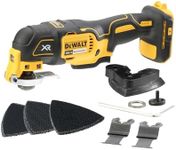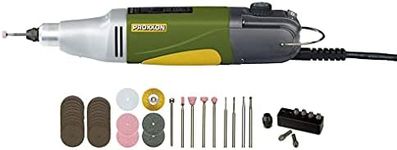Best Rotary Tools
From leading brands and best sellers available on the web.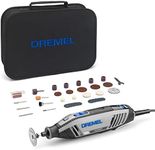
Dremel
15%OFF
Dremel 4250 Rotary Tool 175 W, Multitool Kit with 35 Accessories, 175W Motor with Electronic Feedback, Variable Speed 5.000-35.000 RPM
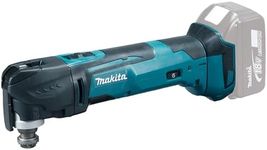
Makita
Makita DTM51Z Multi-Tool, 18 V,Blue

Dremel
20%OFF
Dremel 3000 Rotary Tool 130 W, Multi Tool Kit with 15 Accessories, Variable Speed 10.000-33.000 RPM

Dremel
Dremel 8260 Cordless Rotary Tool, 12V 3Ah Lithium-Ion Battery - Multi Tool Kit with 65 Accessories + 5 Attachments, Brushless Motor, Electronic Feedback, Variable Speed 5.000-30.000 RPM, Bluetooth
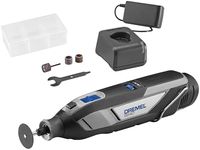
Dremel
17%OFF
Dremel 8240 Cordless Rotary Tool 12V 2Ah Lithium-ion Battery, Multitool Kit with 5 Accessories, Variable Speed 5.000-35.000 RPM and Quick Charge Time
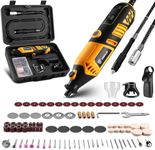
DEKOPRO
Power Rotary Tool Kit 170W: DEKOPRO 126pc Multi DIY Tool Kit for Wood/Metal - Mini Electric Sander/Drill Set with Flex Shaft for Carving, Cutting, Sanding, Grinding, Polishing, Engraving (Yellow)
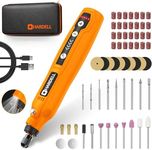
HARDELL
15%OFF
HARDELL Mini Cordless Rotary Tool, USB Charging, 5-Speed Rotary Tool Kit with 69 Accessories, Multi-Purpose 3.7V Power Multi Tool for Sanding, Polishing, Drilling, Etching, Engraving, Cutting, DIY

Fanttik
Fanttik F2 Master Mini Cordless Rotary Tool Kit 4V, NeoPulse Motor, 5 Variable Speed, 25000 RPM, Revostor Hub, 35 Accessories, Power Tool for Sanding, Polishing, Drilling, Carving, DIY Crafts
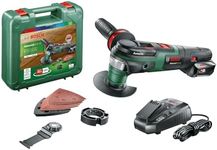
Bosch
14%OFF
Bosch 603104071 AdvancedMulti 18 Cordless Multifunction Tool with 18 V Lithium-Ion Battery, Green
